It’s easy to get confused between ATVs (all-terrain vehicles) and UTVs (utility terrain vehicles), especially since their acronyms only differ by a single letter. However, these are two different vehicles that serve different purposes and have different insurance needs.
If you plan on securing an off-road vehicle, it’s essential to understand what exactly these two are and their main differences so that you can make an informed decision.
What is an ATV?
As its name implies, an all-terrain vehicle is designed to move effectively across a variety of terrain conditions. To better deal with landscape issues, the pressure on ATV tires is adjusted depending on the terrain. For instance, standard tire pressure is used for hard surfaces like hard sand and concrete pavements, but lowered tire pressure works best for softer landscapes like snow, mud, or loose sand.
An ATV typically comes with a straddle seat and a handlebar for manual steering. While most ATVs are designed for one rider only, some models can carry an additional passenger. However, the riders’ size and weight directly impact the vehicle’s speed and handling, so it’s essential to take that into account when shopping for an ATV.
ATVs are typically used as a quick transportation option to move swiftly over rough terrain, especially in recreational activities like racing or trail riding. While they cost significantly lower than UTVs, you also need to consider safety gear costs and insurance fees when purchasing an ATV. Safety equipment doesn’t come as part of the vehicle. As a result, ATV riders often wear protective gear like gloves, boots, and a helmet.
What is a UTV?
Utility terrain vehicles are larger than ATVs, as they can seat multiple passengers side by side and still have a lot of storage space for items and packages. UTVs are built this way because they are used mostly for work, specifically to carry heavy equipment and products to places that can’t be reached with a standard truck. UTVs are popular in agricultural settings and transport large amounts of hay and produce across farms.
It’s easier to drive a UTV because it’s designed much closer to a regular car than an ATV. It has the standard four wheelbases, a steering wheel, and foot pedals to control braking and accelerating. While the UTV has better overall power and speed than the ATV, it’s nowhere near as nimble and tends to have difficulty in rough terrain.
The UTV is expensive because it’s meant for professional use, unlike ATVs which are mostly purchased for recreation. Despite its high cost, the UTV is a solid investment because it already comes with standard safety equipment (occupant restraints, roll bars, and a windshield). Some models are also built with fully enclosed cabins and other modifications.
A Final Word on ATVs and UTVs
Choosing between an ATV and a UTV boils down to your purpose for the vehicle. If you plan to use it to transport yourself across rugged terrain quickly, the ATV is preferable. If you wish to use the vehicle for transporting heavy loads and/or carrying multiple passengers, the UTV would be more ideal.
While ATVs and UTVs are generally safe to operate, it’s better to have insurance if an accident happens. Most ATV insurance policies also cover UTVs, although the policy often needs to be adjusted for proper coverage. Unlike ATVs, UTVs are often modified so that they can perform specific tasks better. As such, UTV insurance needs to be comprehensive to ensure that it can cover damage both to the vehicle and its modifications.
If you plan to buy an ATV or UTV, you need to protect yourself and your vehicle by securing the necessary insurance. MaxRPM Insurance has the best ATV and UTV insurance policies in the market, offering affordable ATV and UTV insurance costs while still providing comprehensive coverage so that you’ll be adequately protected as you comfortably enjoy riding your vehicle. Contact MaxRPM Insurance now and get an ATV or UTV insurance quote for free.
